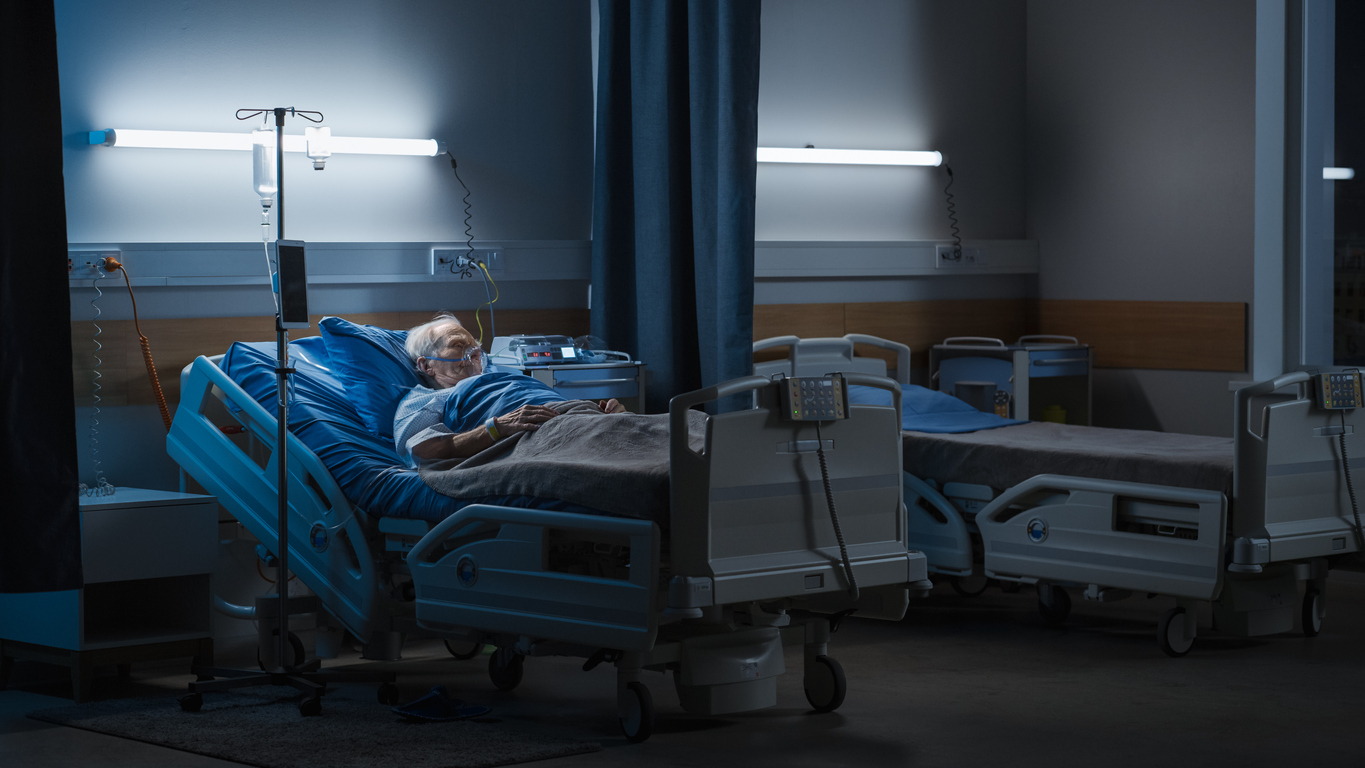

Julie McFadden, or Nurse Julie, as she goes by on social media, has amassed a huge following online by posting intimate stories and details from her time as a hospice nurse. She has cared for hundreds of dying patients over the years, doing her best to help them feel comfortable during their final moments.
The 39-year-old healthcare worker recently went viral for sharing the one thing that tends to comfort her patients the most. It’s a phenomenon known as “visioning,” which usually happens about a month before the patient is about to pass.
McFadden said this simple act can provide instant relief to all kinds of hospice patients and can even help them find understanding as they face their fear of death.
Visioning occurs when the person is still fully lucid. The person usually sees their deceased friends, loved ones, and even their pets in the form of a vision.
“It happens most of the time at the end of their life — but they aren’t delusional,” she told her followers. “It’s called ‘visioning’ and it’s often very comforting for the person. This helps many grieving relatives feel better about the dying process. It’s never scary — if they’re scared, it’s likely they’re experiencing delirium or paranoid, not visioning.”
She said visioning is more common than most people realize. “People don’t talk about it much but it’s really common and more than half of people I have looked after have experienced it,” she added.
The experience provides comfort by showing the person they won’t be alone when they die. Experts aren’t sure where the phenomenon comes from, but deathbed visions have been recorded throughout history. There are few scientific studies looking into the matter, but the largest cross-cultural survey was carried out in 1997. Researchers found that over 70% of deathbed visions were “take away,” which is when the person sees their loved one who then leads them on a journey into the afterlife.
In a Western culture, dead parents or relatives were most commonly seen; strangers were occasionally seen, and some children reported seeing living friends. People who have a strong religious faith would see religious figures, and in Eastern cultures the take-away figure is often a “Yamdoot”, the messenger of the God of death.
“Usually, the dying person’s response to the vision is one of interest or joy, the figures are welcome and the person is usually ready to leave with them. More rarely the response may be one of fear or a refusal to go,” wrote Dr. Peter Fenwick.
McFadden explained that it’s “normal to fear death,” but it’s a natural part of life. “I’ve had several patients who have expressed their fear — but then a family member came to them, and they were no longer scared,” the influencer said.
The act of visioning is usually peaceful, she said. It doesn’t necessarily mean that the person is experiencing psychosis or has low oxygen levels. In fact, they seem largely aware of their surroundings.
“Lots of times people who have experienced this will say ‘I know this sounds crazy’ – they’re very aware of what’s going on,” she said.
She shared her knowledge on TikTok to encourage other people to share this information with their loved ones. Many people took to the comments to explain how “visioning” helped their loved one find peace at the end of their life.
“I am not scared of death anymore since I started seeing your videos,” one person commented.
“My dad saw his siblings, my mom saw her sister and heard my dad, my grandma saw her son who preceded her in death. It’s beautiful to witness,” wrote another.
“My father saw his mother a few hours before he died. He reached for her saying ‘mummy I’m so happy you are here,’” another person commented, “Yes, my dad told me that he saw his mother. It actually gave me comfort.”
Her post also brought peace to many people who recently lost family members.
“I lost my mom in June, she was only in hospice for one day. Your page has been comforting knowing that what we saw in those last hours was normal,” another person said.
“The awareness is so good, especially for student nurses. I wish I had this before I did my first end of life 16 years ago. It still sticks with me,” wrote one nurse.
In a shocking incident on December 4, 2024, Brian Thompson, the CEO of UnitedHealthcare, was…
In an unprecedented step toward financial relief and health equity, the city of St. Paul,…
In early November 2024, a shocking tragedy unfolded in Budapest, Hungary, as American nurse Mackenzie…
If Robert F. Kennedy Jr. were to assume leadership of the U.S. Food and Drug…
On November 1, 2024, federal authorities charged 38-year-old Rebecca Fadanelli, owner of Skin Beaute Med…
In a quaint little restaurant in Echo Park, an up and coming author is sitting…